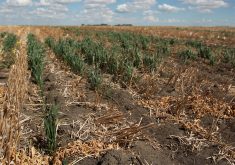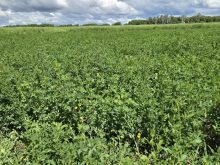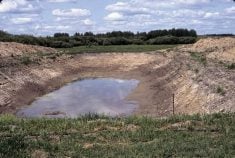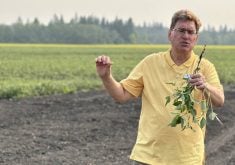The Agricultural Producers Association of Saskatchewan says the province needs to do more to prepare for drought
WINNIPEG — Saskatchewan needs to prepare for drought.
Not just in 2024 but for future droughts as well, says the Agricultural Producers Association of Saskatchewan.
That’s why APAS is asking for a Provincial Drought Preparedness Committee, which will help farmers and the province respond more effectively to dry and difficult conditions.
“The whole idea is to be proactive, rather than reactive,” said Bill Prybylski, APAS vice-president and a farmer in the Willowbrook area, west of Yorkton.
In a letter sent to Saskatchewan agriculture minister David Marit in early March, APAS president Ian Boxall explained that a drought committee could provide a number of functions:
Read Also

Crop quality looks good this year across Prairies
Crop quality looks real good this year, with the exception of durum.
- Warning and mitigation by collecting climate data, identifying early warning signs of drought and providing input on the province’s drought response.
- Help with resource allocation during drought to support farmers and communities.
- Foster collaboration between government, agricultural groups, communities and researchers.
- Assist with long-term planning.
“The proposed committee could monitor program participation, distribute information and explore further changes to better equip farmers in managing weather challenges and making informed decisions,” Boxall said.
The members of the proposed committee would likely be government reps, farmers, ag industry officials and researchers.
One of the key requests in the APAS letter is preserving crop insurance coverage with a program tweak that APAS describes as “yield cushioning.”
If a producer has a poor crop yield in a drought year, it reduces that farmer’s coverage in future years.
“If it is just a one year drought, that number isn’t going to affect (coverage) that significantly,” Prybylski said.
But if there are multi-years of drought, their coverage drops “quite significantly,” he added.
“We want to see a (yield) floor to help support those numbers,” Prybylski said.
“What we’re hoping with the yield cushioning, on those years where there is a significant decrease in yield … if there could be a floor set. So that year’s yield could be calculated on a percentage of their long-term average.”
In its letter, APAS praised the province and the Saskatchewan Crop Insurance Corp. for the changes in forage crop insurance announced March 5.
SCIC is now offering coverage for mixed forage, greenfeed and silage and has improved the Forage Rainfall Insurance Program.
Such enhancements are helpful, but drought programs and financial supports are often crafted in the middle of a drought.
“In a lot of cases in the past, producers have been in limbo … not knowing (if) they qualify for programs, or if there will be programs,” he said.
“Sometimes the announcements come too late…. They (farmers) have already made decisions to downsize their herd, or whatever.”
The basic idea behind the drought preparedness committee is to have the necessary tools and programs in place before a drought arrives so farmers and the ag industry can respond more effectively.


















